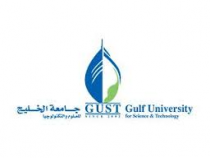Quantum Dot Market by Product, Material, Vertical and Region - Global Forecast to 2025 - ResearchAndMarkets.com
The "Quantum Dot Market by Product (Display, Medical Devices, Solar Cells, Photodetector/ Sensors, Lasers, Lighting (LED), Batteries and Energy Storage, and Transistors), Material (Cadmium-Based, Cadmium-Free), Vertical, and Region - Global Forecast to 2025" report has been added to ResearchAndMarkets.com's offering.
The global quantum dot market size is expected to grow from USD 3.5 billion in 2020 to USD 10.6 billion by 2025, at a CAGR of 24.6%
Increasing demand for quantum dot in display devices and advanced features of quantum dot are creating scope for the quantum dot industry. However, the limited availability of rare earth material is likely to hinder the growth of the quantum dot industry in the future.
Cadmium-Free material to dominate the quantum dot market during the forecast period
A majority of quantum dot manufacturers are switching from toxic cadmium-based quantum dot devices to cadmium-free quantum dot devices. This act is in accordance with the draft amendment by the European Commission to the EU Directive on the restriction of hazardous substances (RoHS) in electrical and electronic equipment. Cadmium-free quantum dot offer a safer and more sustainable option for manufacturers and consumers, giving them the color benefit associated with the technology without the risks associated with toxicity or potential regulatory limitations. Cadmium-free quantum dot also open up potential not just for displays, but for many more applications that include lighting solutions, solar cells, and biomedicine.
Displays to dominate quantum dot market (in terms of value) during the forecast period
Quantum dot manufacturers are striving to offer the best quality displays in the market. QLEDs have a narrow spectrum, high stability, which allows a considerable cost reduction; therefore, they are attractive for industrial manufacturers. With many advantages, quantum dot displays are considered as the next-generation display technology. Quantum dot are incorporated into a new generation of applications, including flat-panel TV screens, digital cameras, smartphones, gaming consoles, and personal digital assistant (PDA) devices. LEDs with quantum dot luminophores sound promising in the development of next-generation displays. As a result, the display devices are expected to dominate the quantum dot industry during the forecast period.
Consumer to dominate quantum dot industry (in terms of share) during the forecast period
The consumer vertical is expected to continue to hold the largest share of the quantum dot market in the near future. The increasing demand for superior display technologies and energy-efficient solutions is likely to drive the quantum dot display market growth. Quantum dot LEDs emit light in highly specific distributions, render colors accurately, and use much less power than conventional LCDs. Many consumer electronics companies have started utilizing the quantum dot technology in their products as this technology could improve displays performance dramatically in terms of color gamut, color accuracy, and reduced power consumption. In addition, the unique characteristics of quantum dot such as high brightness, pure color, and wavelength tenability enable display designers to customize a spectrum of light to maximize both the efficiency and color performance of any display for incredible new user experience.
APAC to grow at highest CAGR in quantum dot market during the forecast period
The adoption of quantum dot products in lighting, automotive, consumer electronics applications drives the quantum dot industry growth. As of now, quantum dot are in a pre-commercialization stage; however, in the coming years, the quantum dot will be deployed in mobile displays, batteries and energy storage systems, solar cells, medical devices, and solid-state lighting solutions. Therefore, APAC is expected to command the quantum dot market in the near future. The rising middle-class population with high disposable income and its demand for innovative products, along with improving manufacturing efficiencies, propels the growth of the market in APAC.
Key Topics Covered:
1. Introduction
2. Research Methodology
3. Executive Summary
4. Premium Insights
5. Market Overview
5.1. Introduction
5.2. Market Dynamics
5.2.1. Drivers
5.2.2. Restraints
5.2.3. Opportunities
5.2.4. Challenges
6. Industry Trends
6.1. Introduction
6.2. Value Chain Analysis
6.3. Key Industry Trends
7. Quantum Dots Processing Techniques
7.1. Introduction
7.2. Colloidal Synthesis
7.3. Fabrication
7.4. Bio-molecular self-assembly
7.5. Viral Assembly
7.6. Electrochemical Assembly
7.7. Bulk Manufacturing
8. Quantum Dots Market, by Product Type
8.1. Introduction
8.2. QD Display
8.3. QD Medical Devices
8.4. QD Solar Cells
8.5. QD Laser
8.6. QD Photodetectors/QD Sensors
8.7. QD Lighting(LED)
8.8. Batteries and Energy Storage
8.9. Transistor
8.10. Others (QD Chips)
9. Quantum Dot Market, by Material
9.1. Introduction
9.2. Cadmium Based
9.3. Cadmium-free
9.4. Indium Arsenide
9.4.1. Applications
9.5. Silicon
9.6. Graphene
9.7. Lead Sulfide
10. Quantum Dots Market, by Verticals
10.1. Introduction
10.2. Consumer
10.3. Commercial
10.4. Healthcare
10.5. Defense
10.6. Telecommunications
10.7. Sports & Entertainment
10.8. Transportation & Public Places
10.9. Education
10.10. Other Verticals
11. Geographic Analysis
11.1. Introduction
11.2. North America
11.3. Europe
11.4. APAC
11.5. RoW
12. Competitive Landscape
12.1. Introduction
12.2. Ranking Analysis of Key Players
12.3. Competitive Leadership Mapping
12.4. Competitive Situation And Trends
13. Company Profiles
13.1. Introduction
13.1.1. Key Players
13.1.2. Samsung Electronics
13.1.3. Nanosys
13.1.4. Nanoco Group
13.1.5. QD Laser
13.1.6. NN-Labs
13.1.7. Ocean Nano Tech.
13.1.8. Quantum Material
13.1.9. Nanophotonica
13.1.10. OSRAM LICHT
13.2. Other Key Players
13.2.1. Crystalplex
13.2.2. Navillium Nanotechnologies
13.2.3. UbiQD
13.2.4. Fraunhofer Gesellschaft (Fraunhofer Institute of Applied Polymer Research(IAP))
13.2.5. Quantum Solutions
13.2.6. Ranovus
13.2.7. Innolume
13.2.8. Avantama
13.2.9. TCL
13.2.10. VIZIO
13.2.11. Hisense
For more information about this report visit https://www.researchandmarkets.com/r/kgr7fs
View source version on businesswire.com: https://www.businesswire.com/news/home/20200414005849/en/





